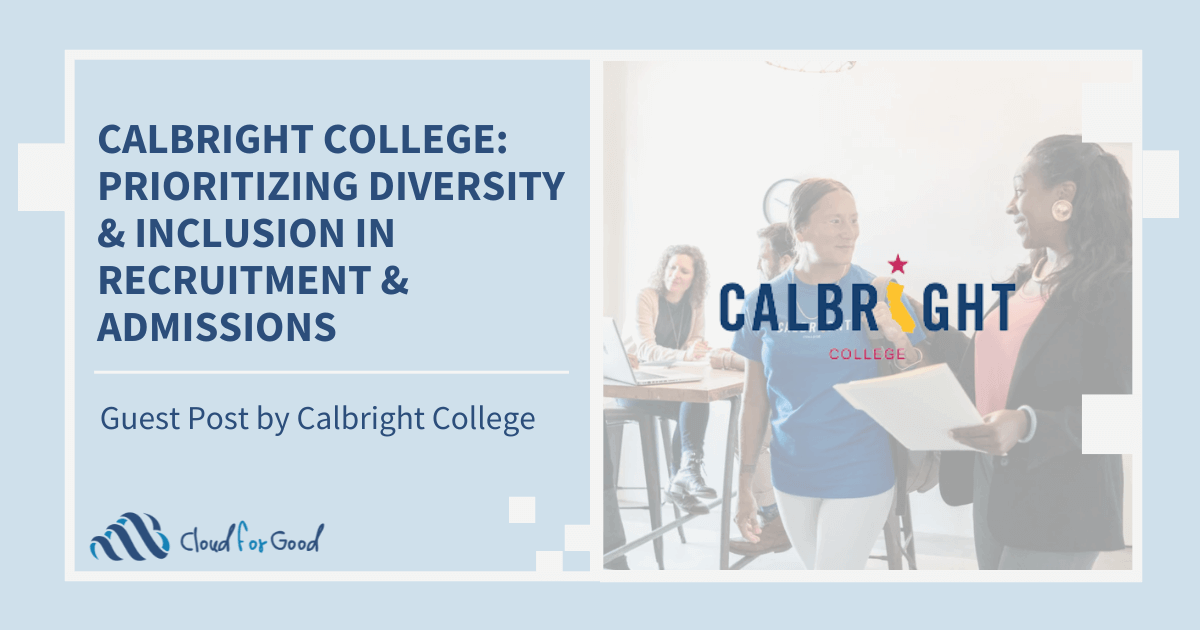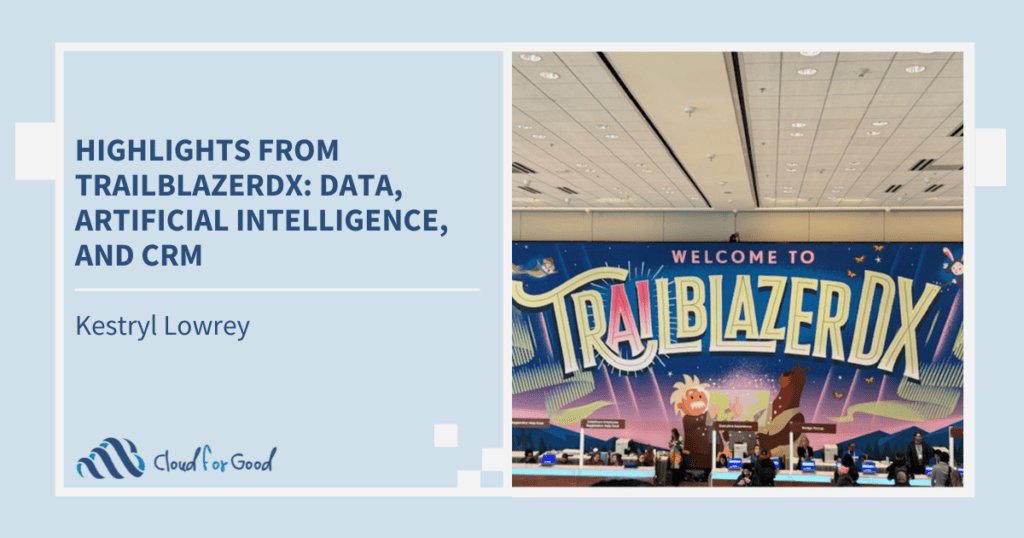Calbright College is California’s only fully online community college and was established to increase access to skills-based credentials and certificates for non-traditional learners across the state – those who have fallen through the cracks in the economy, or who need to upskill or re-skill to be competitive in today’s rapidly evolving job market. The College opened for enrollment shortly before the pandemic began and offers a uniquely flexible and competency-based education model. Students move ahead by mastering content, not by spending a prescribed number of hours in a classroom. Currently free for California residents, Calbright prepares students to earn industry-valued certificates, instead of traditional degrees, and its programs can be completed in less than a year.
Calbright is building a new college from the ground up, and so when we first engaged with Cloud for Good to implement Salesforce, the College was in the unique position of being able to build its technology from scratch. Configuring Education Data Architecture (EDA) for tracking prospects, applicants, and partners, as well as to support the institution’s application process, provided us with a system of truth for recruiting and admissions data capable of being leveraged to scale alongside our planned growth. With the Salesforce foundation firmly set, we have continually iterated our use of the platform and refined its focus to benefit the largest number of Californians possible. One of the most exciting new innovations prioritizes diversity and inclusion in the recruitment and admissions process.
What Makes Calbright College Unique
Calbright College caters to an incredibly diverse student body in need of modern tools to complement its student experience. 92% of Calbright’s students are 25 or older, compared to 42% across the California Community Colleges system. 24% identify as Black, compared to roughly 6% across the system, and 80% of Calbright students identify as part of the BIPOC community. Additionally, more than a third are parents or caregivers, more than triple the systemwide rate. It’s absolutely critical to know this information so that we can design the College around our students’ needs and ensure our marketing and communications efforts reflect their experiences, goals, and needs.
This is especially true when it comes to our website, for example. With 65-70% of Calbright College’s website traffic coming from mobile users, we have used data and analytics from Salesforce to optimize the mobile experience and inform marketing efforts that prioritize representation and meet students where they are to share information about how our programs fit into their lives and schedules.
Creating Accessible Education for Working Adults
For the Fall 2021 semester, Calbright College added new questions into student applications built with Salesforce and FormAssembly. These questions sought additional information on why students were interested in enrolling, their employment status, etc. Results revealed that 90% of students chose to enroll because Calbright’s unique online model made their program accessible. We also learned that; 40% of students were unemployed, 18% worked part-time, and 8.4% worked more than 40 hours per week. These figures are indicative of an uncertain labor market relationship, as well as the considerable value an institution like Calbright College can provide to people looking to make a change in their lives.
Calbright students can be found in 40 of the 58 California counties, and 22 of those 40 are considered to be rural counties with less reliable internet access. To that end, our institution has established an extensive technology loaner program lending out Google Chromebooks and Wi-Fi hotspots to any student in need. Slack has also been implemented to further empower digital communication between students and Calbright College staff. Counselors, tutors, and faculty are also on Slack to help support students directly and in larger groups, and together with students are creating a sense of community within the digital commons.
Removing Barriers of Entry
The importance of encouraging curiosity and breaking down barriers through technology extends to our institution’s student success team. Through a proactive outreach program, Calbright student support staff use Salesforce to find and engage students who have expressed interest, or possibly submitted an application, but have not yet moved forward in the process. They proactively reach out to assist students along their respective journeys and answer any questions they might have. Salesforce technology is coupled with the College’s human-powered support to bolster career services, academic tutoring, and counseling to help students engage with the institution and to help students sidestep roadblocks before they ever manifest.
Using Salesforce to track everything campus-wide, including student demographics, enrollment, and recruitment figures, Calbright College enrollment more than doubled between July 2021 and March 2022, surpassing 1,000 students for the first time in history. Building a college from the ground up is remarkably difficult and requires a great sense of focus. Facing the challenge head-on, Calbright College has leveraged Salesforce technology to build the systems and support necessary to empower populations underserved by higher education. These are populations not often the subject of research studies or data-driven solutions, but Calbright serves as the leading edge of the learning curve in solving the complex, multi-variable equation of nurturing student success for adult and non-traditional students.
5 Key Tips for Making R&A More Accessible
- Representation matters. Utilize marketing to better reflect the diversity of your student body.
- Look back on previous enrollment data. There are always lessons to be learned in previous admission processes, utilize this historical data to inform strategies moving forward.
- Use technology to engage your students. Text, email, and social media should all be leveraged to better communicate, inform, and engage students on a daily basis.
- Optimize your website. For many, your website will be the first impression of your institution. Make sure they are drawn in, instead of turned away.
- Remain true to your founding vision. Why should students choose your institution? How do you convey that to prospects? Focus on what makes you unique and spread that message transparently.





